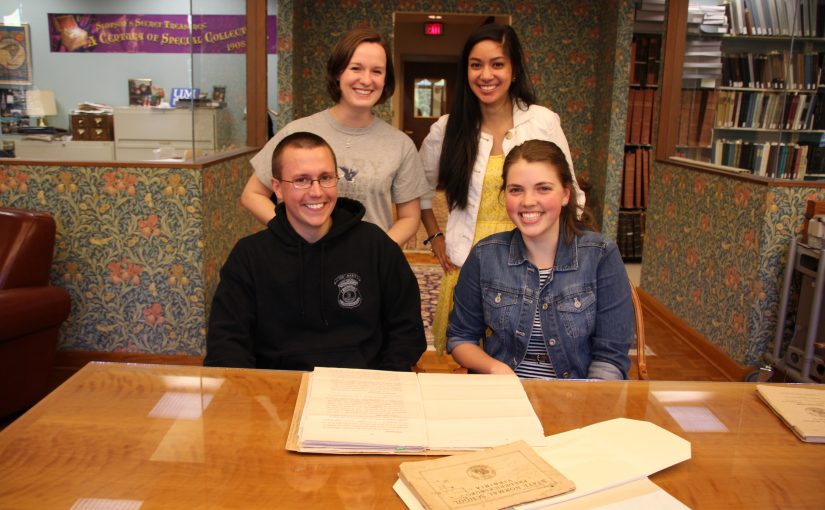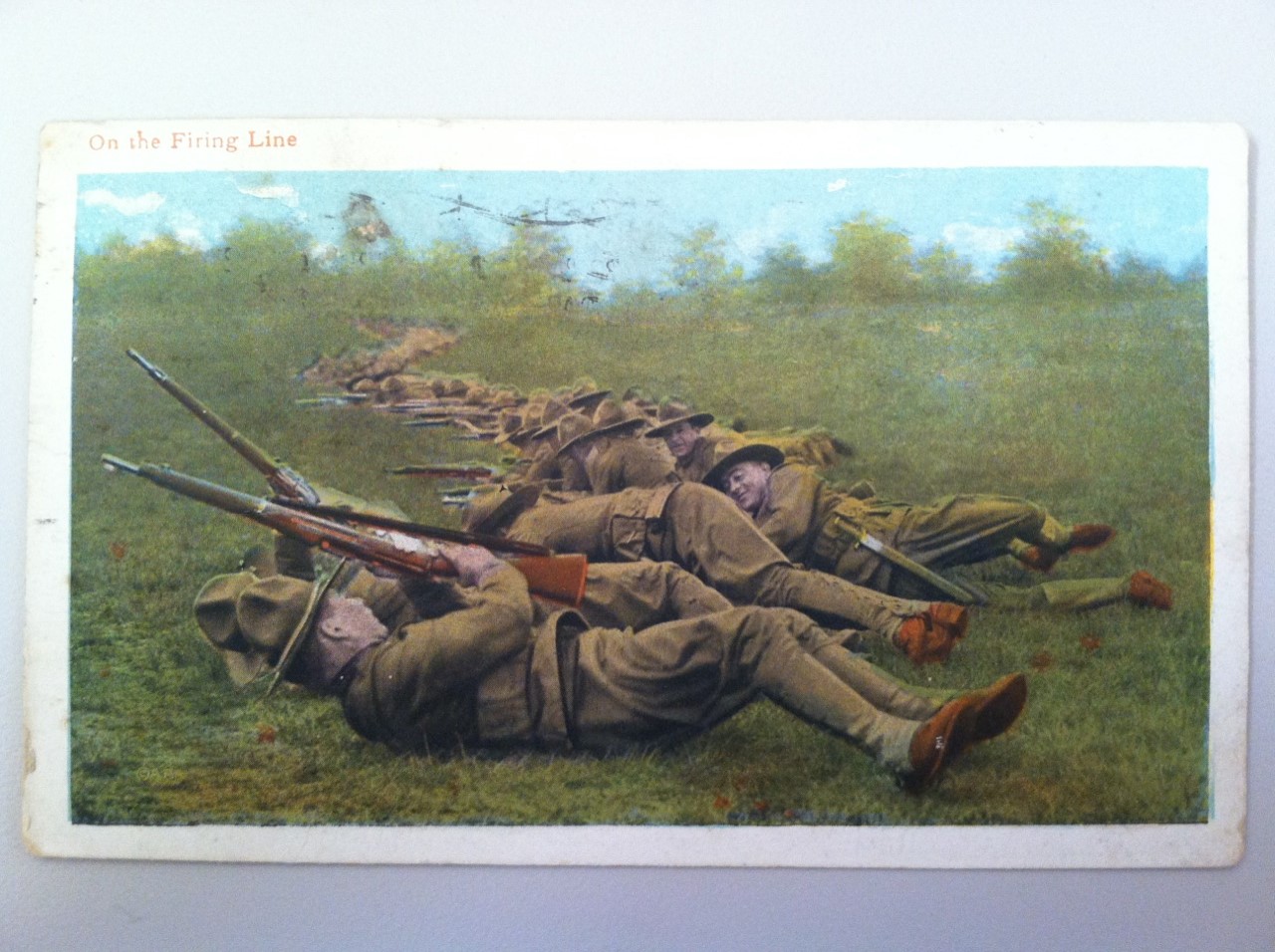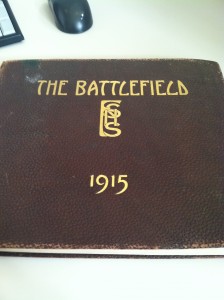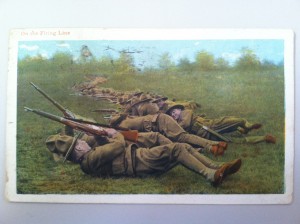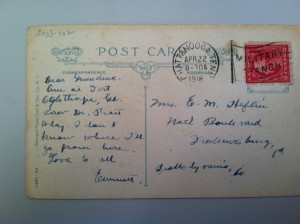Photo by Leigh Williams, 2014.
This semester has gone by incredibly fast, but, as they say, time flies when you’re having fun. The Century America project was so much fun for me to be a part of, and I had the best group members that I could have asked for. Together Julia, Jack, Candice, and I created a digital history website that successfully fulfills our contract.
We stated that our mission was to “research and exhibit the narrative of the World War I homefront experience at the State Normal School and in the Fredericksburg area” and create an exhibition-like website to showcase this research. We spent many hours going through archival materials to learn about the homefront experience, and our 8 different pages on the site provide many diverse, intriguing narratives that showcase Fredericksburg’s and UMW’s history: Community and War Timeline, Knox Family, Urbane Bass, Josiah P. Rowe, Faculty and Staff, Academics, Student Life, and Influenza Epidemic.
The homepage for the UMW Century America site is not as visually complex as we had originally imagined (images, quotes, other media, map, interactive elements), but I believe that the landing page we currently have is an effective but simple introduction that captures the visitor’s attention without overwhelming him/her. As originally planned, we split the site’s narrative into 2 main sections: Fredericksburg (town/community) and Fredericksburg State Normal School. Though the site is split in such a way, many of the narratives demonstrate the intimate connection between the town and school experience.
The homepage for each subcategory has the image links to navigate to the 4 subsections, and we also decided to add some introductory text with basic information about Fredericksburg and FSNS, as well as a brief summary/preview of what visitors can find within the sections. For the Fredericksburg section we decided to do away with the Influenza page, due to a lack of resources, and instead create a “Community and War Timeline” page based on the extensive Virginia War History Commission materials and the William F. Liebenow diaries (mistakenly referred to in our contract as the Mary Eastburn diaries—there was some miscommunication with different CRHC staff as to the creator and name). This combination of materials and the lack of an Influenza page left us with one slot to fill, which we decided would be for Dr. Urbane Bass. Jack found much material at the CRHC and is fascinated with Dr. Bass’s story of service and sacrifice, so it was only natural to add it to the Fredericksburg section. It also gives a unique look into a small part of the African American experience in Fredericksburg during WWI. No changes were made to the categories for the FSNS section of the website. Some elements that were not mentioned in our contract, but not foreseen by us until actually creating the site, are side navigation links, “Voices of the Great War” stories, and the placement of citations (the bottom of each page).
We also have the “About” and “Resources” page, as listed in our contract, as well as a “Sponsors” page. The main menu is a consistent element on every page of our site. The Resources page includes our bibliography, and as stated in our contract, the page also lists the most important archival collections to our research with links to the collections’ home institutions/organizations.
For the main Century America site, we successfully created a website that introduces all of the Century America projects and captures visitors’ attention with an interesting headline. After many struggles with MapsAlive, we (mainly Candice and Julia) were finally able to create an interactive map embedded in the homepage that links to the other schools. We were also able to create an engaging interactive timeline for the main site. We added “About” and “Credits” pages to the main site in order to give viewers more information and direct them to places that might answer their questions (individual projects, official school websites, digital portfolios, etc.). This site fulfills its mission of introducing and explaining the Century America project and that schools involved in it.
We successfully met our milestones with only a few minor snags that were really out of our control—digitized materials from the CRHC were received a couple days past our deadline, and the Century America homepage/interactive map was not complete due to embedding issues and lack of response from our virtual classmates. Our division of labor was as listed in the contract, and we each made excellent contributions to the project. We also helped each other as much as possible. As far as advertising goes, we have been tweeting a lot about the project and a news story will be released very soon about our project. After final approvals and changes from Dr. McClurken and Dr. Pearson, we will blitz the internet with advertising for our awesome site.
It was such a great experience to work on the Century America project and be part of a groundbreaking digital history experiment. Dr. McClurken and Dr. Pearson, thank you so much for this wonderful opportunity.

